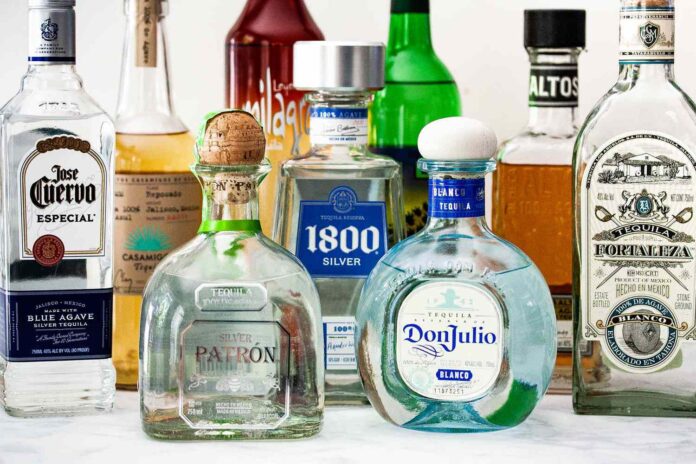What is Tequila? Learn to Know your Tequila.
https://en.wikipedia.org/wiki/Tequila
Tequila is made from the heart of the agave plant, which is called the piña. The piña is roasted above-ground in an oven and then shredded or grounded into a pulp. Then, the pulp is mixed with water and yeast and fermented in large vats for two to three weeks.
Subscribe to our Youtube channel: https://www.youtube.com/@promovision/videos
Tequila is a distilled beverage made from the blue agave plant, primarily in the area surrounding the city of Tequila 65 km (40 mi) northwest of Guadalajara, and in the Jaliscan Highlands (Los Altos de Jalisco) of the central western Mexican state of Jalisco.
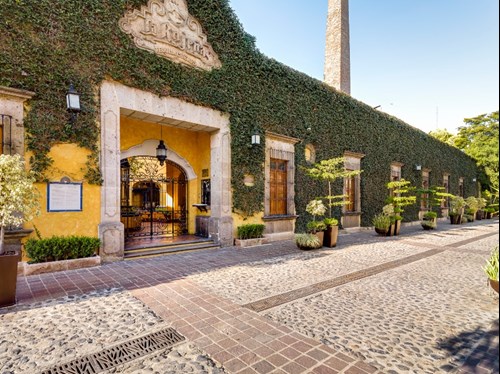
The red volcanic soils in the region of Tequila are well suited for growing the blue agave, and more than 300 million of the plants are harvested there each year. Agave grows differently depending on the region. Blue agaves grown in the highlands Los Altos region are larger and sweeter in aroma and taste. Agaves harvested in the valley region have a more herbaceous fragrance and flavor. Due to its historical and cultural importance, the region near Tequila was declared a UNESCO World Heritage Site in 2006, the Agave Landscape and Ancient Industrial Facilities of Tequila.
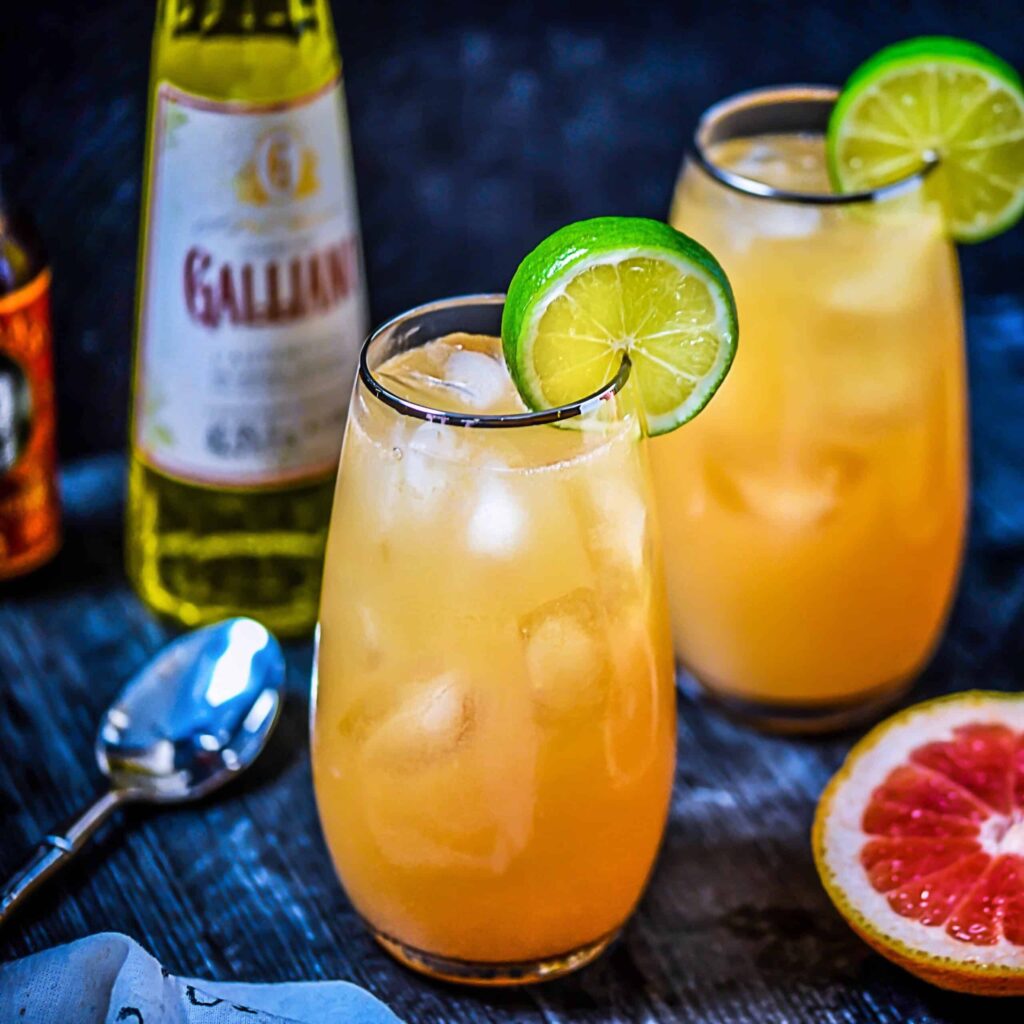
Mexican laws state that tequila can be produced only in the state of Jalisco and limited municipalities in the states of Guanajuato, Michoacán, Nayarit, and Tamaulipas. Tequila is recognized as a Mexican designation of origin product in more than 40 countries. It was protected through NAFTA in Canada and the United States until July 2020, through bilateral agreements with individual countries such as Japan and Israel, and has been a protected designation of origin product in the European Union since 1997.
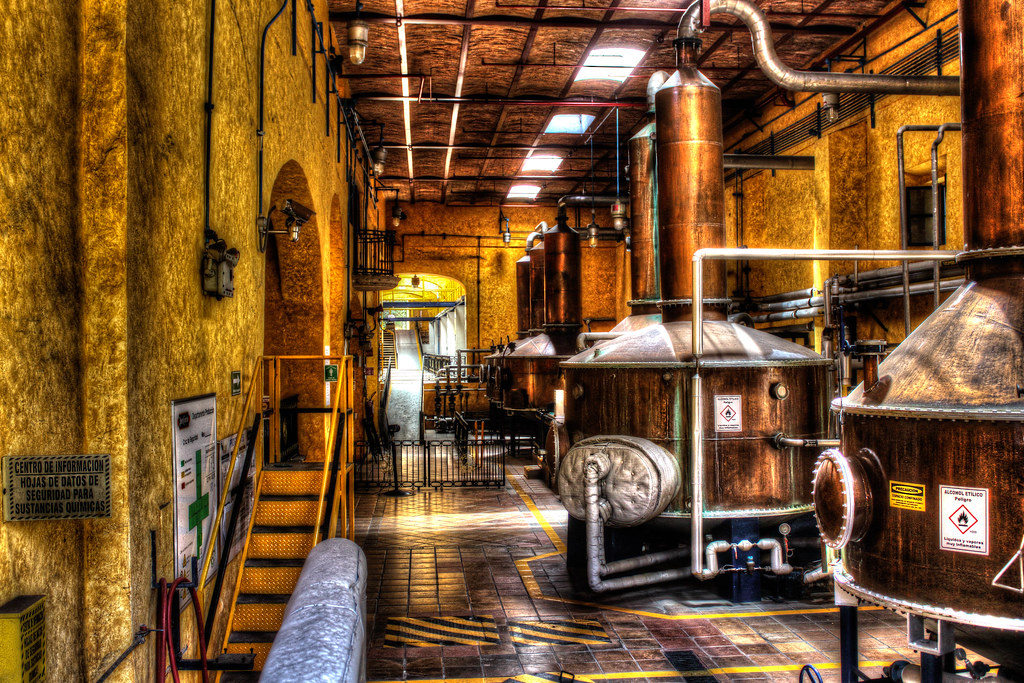
Aside from its geographical distinction, tequila is differentiated from mezcal in that it is made only from blue agave and the beverages are prepared in different ways. Tequila is commonly served neat in Mexico and as a shot with salt and lime around the world. Tequila must have between 35 and 55% alcohol content (70 and 110 U.S. proof).
The distillation technology to produce mezcal from agave heart juice was first introduced from the coastal regions of what was then Nueva Galicia (present-day Aguascalientes, Colima, Guanajuato, Jalisco, Nayarit, and Zacatecas) into the highland valleys of Amatitán, Tequila, Magdalena, and El Arenal in the mid-1700s. The mezcal produced in these regions became distinctive enough as to become known as “tequila” (after the town). Prior to the production of either tequila or mezcal, pulque had been brewed from agave for thousands of years.
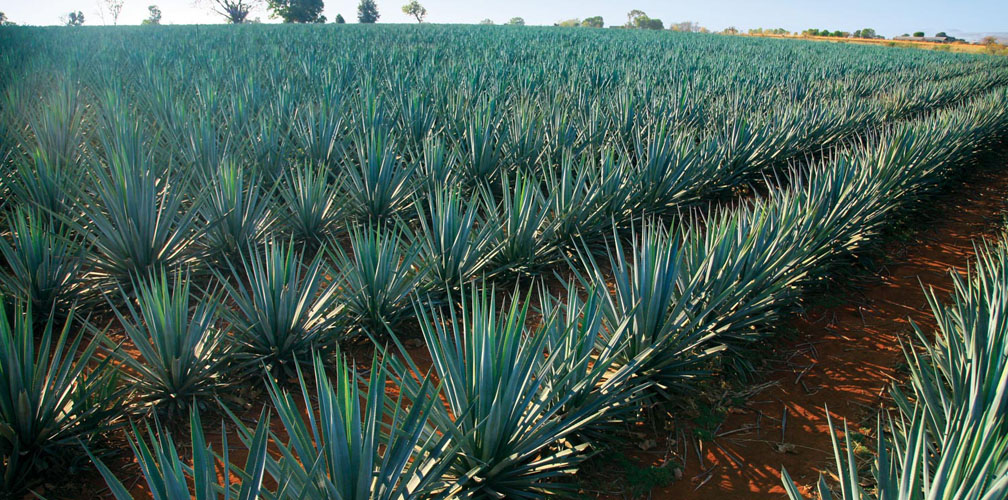
Don Pedro Sánchez de Tagle is considered the first person to produce tequila. In 1595, King Philip II of Spain banned the planting of new vineyards in Mexico and other Spanish colonies due to the decline of wine trade with Spain. The main reason behind this is because Mexico is self-sufficient in producing its own wines. The king did this to maintain the market for Spanish products in the New World, and reap the taxes on wine exports. The Marquis of Altamira grabbed the opportunity of the neglected blue agave plants. He built his first Tequila factory in his Hacienda Cuisillos, one of the largest haciendas during that time and amassed a great fortune. The Marquis is now known today as the “Father of Tequila”. Don Pedro also served as the Prior of the Consulado, which is the head of the largest corporation in Mexico.

Spain’s King Carlos IV granted the Cuervo family the first legal license to commercially make tequila. Don Cenobio Sauza, founder of Sauza Tequila and Municipal President of the Village of Tequila from 1884–1885, was the first to export tequila to the United States, and shortened the name from “Tequila Extract” to just “Tequila” for the American markets. Don Cenobio’s grandson Don Francisco Javier gained international attention for insisting that “there cannot be tequila where there are no agaves!” His efforts led to the principle that real tequila can come only from the State of Jalisco.

The first tequila distillery in the United States was opened in 1936 in Nogales, Arizona by Harry J. Karns, former Arizona state senator and Nogales Mayor.
In a move to take ownership of the term “tequila”, the Mexican government declared the term to be its intellectual property in 1974.
Planting, tending, and harvesting the agave plant remains a manual effort, largely unchanged by modern farm machinery and relying on centuries-old know-how. The men who harvest it, the jimadores [ximaˈðoɾes], have intimate knowledge of how the plants should be cultivated, passed down from generation to generation.

By regularly trimming any quiotes (a several-meter high stalk that grows from the center of the plant), the jimadores prevent the agave from flowering and dying early, allowing it to fully ripen. The jimadores must be able to tell when each plant is ready to be harvested, and using a special knife called a coa (with a circular blade on a long pole), carefully cut away the leaves from the piña (the succulent core of the plant), which can average around 70 kg (150 lb) in the valley to 110 kg (240 lb) in the highlands. If harvested too late or too early, the piñas will not have the right amount of carbohydrates for fermentation.

After harvesting, the piñas [pigɲas] are transported to ovens where they are slowly baked to break down their complex fructans into simple fructose. Then, the baked piñas are either shredded or mashed under a large stone wheel called a tahona. The pulp fiber, or bagazo, left behind is often reused as compost or animal feed, but can even be burnt as fuel or processed into paper. Some producers like to add a small amount of bagazo back into their fermentation tanks for a stronger agave flavor in the final product.

The extracted agave juice is then poured into either large wooden or stainless steel vats for several days to ferment, resulting in a wort, or mosto, with low alcohol content. This wort is then distilled once to produce what is called ordinario, and then a second time to produce clear “silver” tequila. Using at least two distillations is required by law. A few producers such as Casa Noble (for their “Crystal” expression) and Corzo (for their añejo expression) have experimented with distilling the product a third time, but this has not caught on as a trend, and some have said it removes too much of the agave flavor from the tequila. From there, the tequila is either bottled as silver tequila, or it is pumped into wooden barrels to age, where it develops a mellower flavor and amber color.
The differences in taste between tequila made from valley and highland agave plants can be noticeable. Plants grown in the highlands often yield sweeter and fruitier-tasting tequila, while valley agaves give the tequila an earthier flavor.
Fermentation
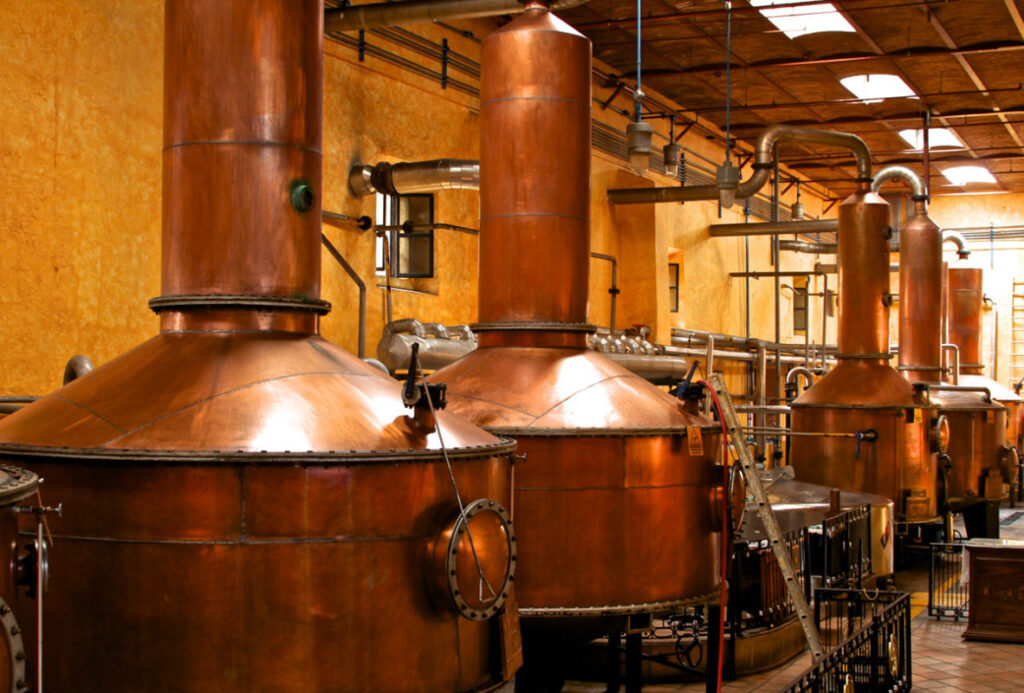
Unlike other tequila production steps, fermentation is one of the few steps out of the control of human beings. Fermentation is the conversion of sugars and carbohydrates to alcohol through yeast in anaerobic conditions, meaning that oxygen is not present during the process. Fermentation is also carried out in a non-aseptic environment which increases the bacterial activity of tequila. The participation of microorganisms from the environment (yeasts and bacteria) makes fermentation a spontaneous process which gives rise to many byproducts that contribute to the flavor and aroma of tequila.
During the fermentation process, inoculum is added to the batch to speed the rate of fermentation. When inoculum is added, fermentation can take approximately 20 hours to 3 days. If inoculum is not added, fermentation could take up to 7 days. The rate of fermentation is a key factor in the quality and flavor of tequila produced. Worts fermented slowly are best because the amount of organoleptic compounds produced is greater. The alcohol content at the end of fermentation is between 4-9%.
Organoleptic compounds Tequila Fermentation Vessel in City of Tequila Museum

Organoleptic compounds enhance flavor and aroma. These include fusel oil, methanol, aldehydes, organic acids and esters. Production of isoamyl and isobutyl alcohols begins after the sugar level is lowered substantially and continues for several hours after the alcoholic fermentation ends. In contrast, ethanol production begins in the first hours of the fermentation and ends with logarithmic yeast growth. The alcohol content in tequila is affected by three factors: the amount of isoamyl alcohol and isobutanol in the yeast strain, the carbon:nitrogen ratio (the higher the ratio, the more alcohol produced), and the temperature of fermentation.
The higher the temperature, the greater concentration of isobutyl and isoamyl alcohols produced. Although if temperatures are too high, this can cause the yeast to become less effective. Similarly, if the temperature is too low, the process occurs too slowly. This can become a large issue in Central Mexico, most precisely the city of Tequila, Jalisco, where most tequila is processed. The temperature in the city of Tequila can reach 31 °C. For this reason, tequila producers often use large stainless steel tanks for fermentation.
Yeast
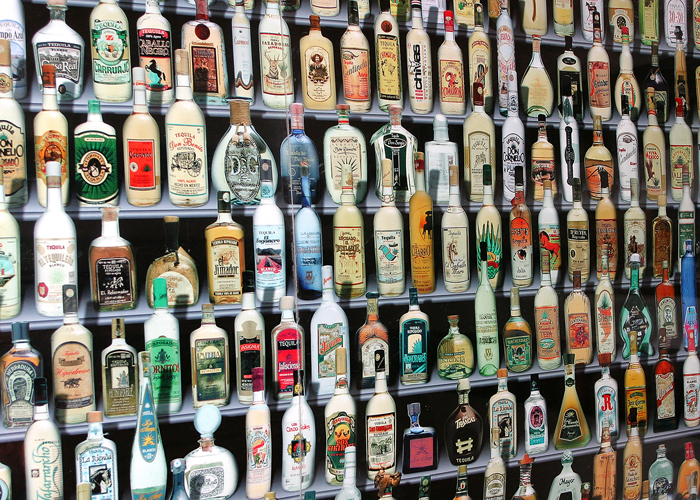
The specific yeasts and the environments in which they act determine the resultant organoleptic combinations. The role of yeast is, through many enzymatic processes, to turn sugars and carbohydrates into alcohol. There are two steps, first in aerobic conditions, yeast is doubled in colony size every four hours. This process goes on for 24–48 hours. Next, yeast turns acetaldehyde into ethyl alcohol which is known as one of the organoleptic compounds produced in fermentation.
The two main categories of yeast used in tequila are commercial brewers yeast and yeast that comes from precultivated existing yeast that has been preserved. The use of either type of yeast can result in different end products of tequila.
Chemistry Alcohol content Saccharomyces cerevisiae, under a microscope
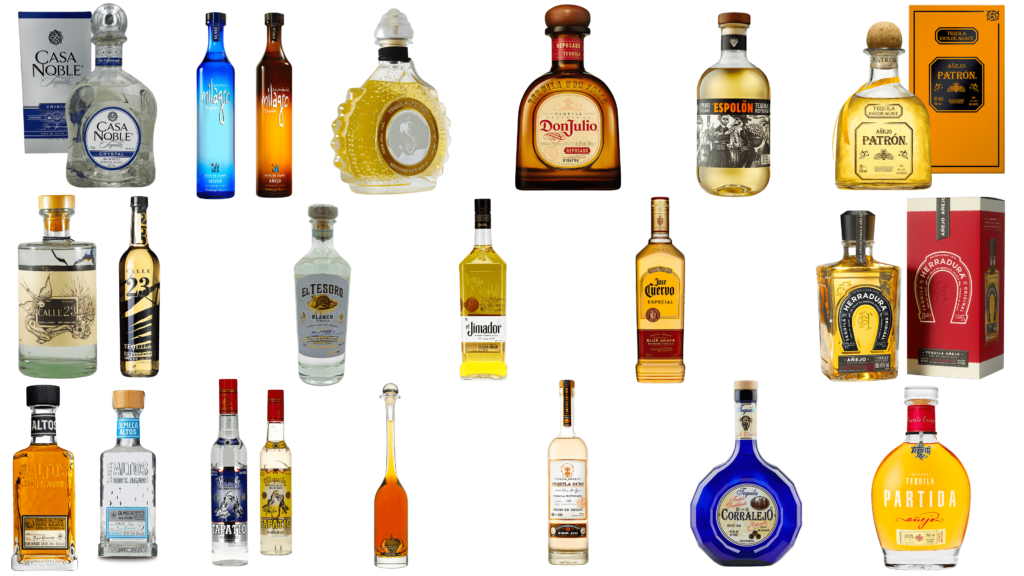
Tequila is a distilled beverage that is made from the fermentation of the sugars found from the blue agave plant once it has been cooked, the main sugar being fructose. Through the fermentation process, many factors influence the higher alcohol content of tequila, which are molecules such as isobutyl alcohol and isoamyl alcohol, and ethanol. These parameters include the type of yeast strain, the age of the agave plant itself, temperature, and the carbon:nitrogen ratio.
Subscribe to our Youtube channel: https://www.youtube.com/@promovision/videos
However, the type of yeast strain used and the carbon:nitrogen factors have the biggest influence on the production of higher alcohols; this is not surprising as higher alcohol and ethanol production is an intrinsic property of the metabolism of each strain. The type of yeast most commonly found in tequila is Saccharomyces cerevisiae, which contains many strains. For example, CF1 agaves, a type of yeast, produces much more ethanol than a strain of CF2, as the two yeasts’ metabolism mechanisms differ. This factor may be influenced from different agricultural practices that occur to cultivate the different yeasts strains. It was found that the higher the carbon:nitrogen ratio, the higher the production of higher alcohols such as isobutyl alcohol and isoamyl alcohol. A high ratio imparts that there is less nitrogen in the fermentation process, which results in deamination reactions of amino acids, leading to the synthesis of higher alcohols. The Ehrlich pathway is the name for this process, where alpha-keto acids are decarboxylated and transformed to aldehydes and to higher alcohols.

The temperature of the fermentation process also greatly affects the alcohol content of the resulting product. For example, a study conducted by Pinal et al. found that cultivating two strains at a temperature of 35°C as compared to a temperature of 30°C produced more isoamyl alcohol. The higher temperature suggests that this is a much more optimal condition for the yeast to ferment the distilled beverage.
Lastly the age of the agave plant itself: the older the plant, the greater the alcohol production. It was shown in a study that the concentration of amyl alcohol increased as the plant aged by a factor 30%. Conversely, a higher concentration of methanol is found when using younger plants. This may be due to differences in agricultural practices that occur when taking care of plants of different ages.
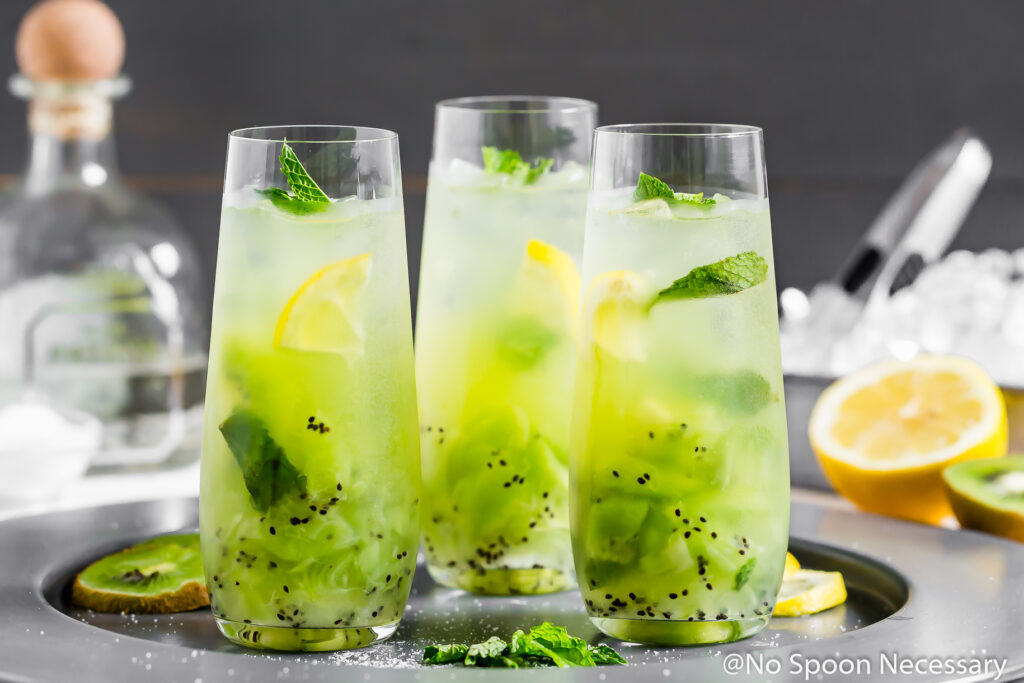
Color
Tequila comes in an abundant array of colors ranging from clear to a dark amber brown. The color of the tequila varies greatly depending on the aging process and the type of wood used for storage. The white version of tequila, known as silver tequila or blanco, is the product obtained without an (or with very short) aging process. As well, the spirit must contain 38–55% alcohol content, which is fermented from a wort that contains no less than 51% sugars from the agave plant. Silver/Blanco tequila provides the purest form as little aging has occurred. What is known as gold, joven or oro tequila is usually silver/blanco tequila with the addition of grain alcohols and caramel color; however, some higher-end gold tequilas may be a blend of silver/blanco and reposado. Aged (reposado) or aged tequila (añejo) is aged in wooden containers. The aging process can last between two months and three years and can create or enhance flavors and aromas. The aging process generally imparts a golden color. Flavor and aroma
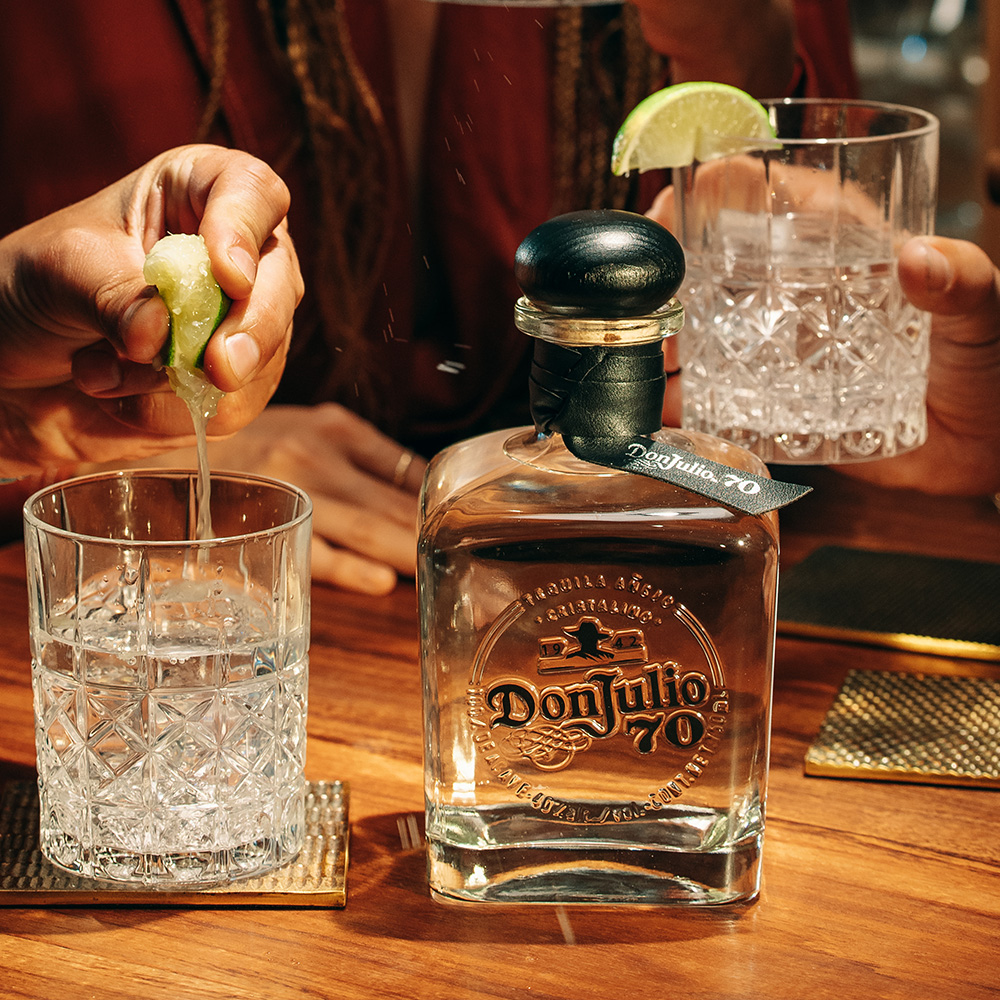
Tequila store in Jalisco
There are more than 300 known compounds in tequila, many of which are produced during the fermentation process, the raw material used, and to a lesser degree during the maturation. The components that make up tequila do not act individually to give tequila its distinctive flavor and aroma, but rather, depend on the interaction and quantity of each volatile compound.[citation needed] The volatile compounds responsible for the flavor and aroma profiles of the tequila are put into a category called organoleptic compounds and are known to increase in concentration with a slower fermentation process. The organoleptic compounds produced during fermentation include higher order alcohols, methanol, esters, carbonyls, terpenes, and furans.
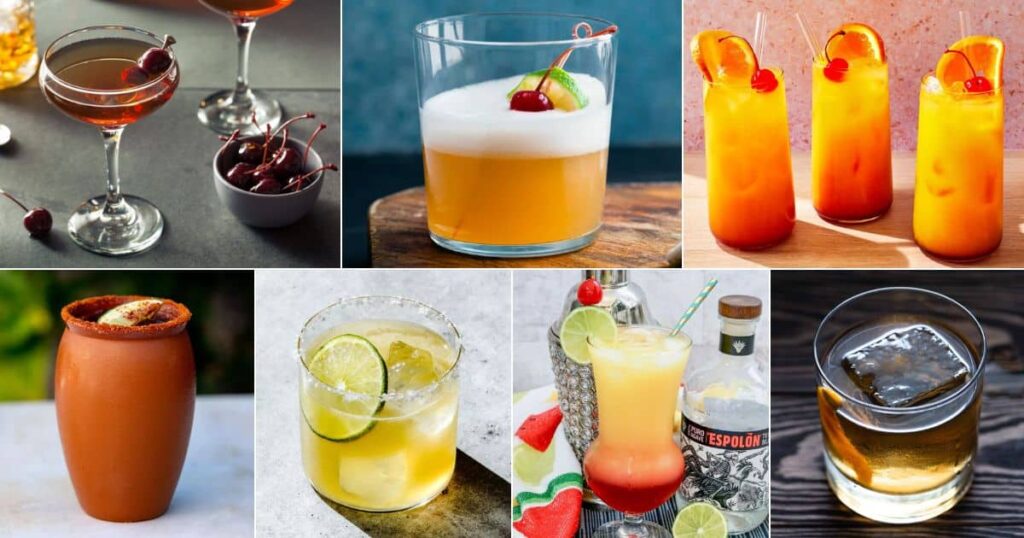
Higher-order alcohols have a strong aroma, and the quantity present in each tequila depends on the carbon:nitrogen ratio and temperature during the cooking and fermentation processes. Some of the most common alcohols present other than ethanol are: isoamyl alcohol, isobutanol, and 1-propanol. Methanol is thought to be mainly generated through hydrolysis of methylated pectin which is naturally present in the agave plant, but there has been speculation that it is also partly produced from the enzymatic reactions of yeast strains containing pectin methyl esterase enzyme, which break up the methoxyl group from the pectin.[citation needed] Nearly 50 different esters are identified in tequila, which together give rise to the fruit-like flavors and smell.[citation needed] One of the most abundant esters is ethyl acetate which is synthesized during fermentation by the yeast Saccharomyces cerevisiae, using alcohol transferase enzyme which links acetic acid to ethanol.
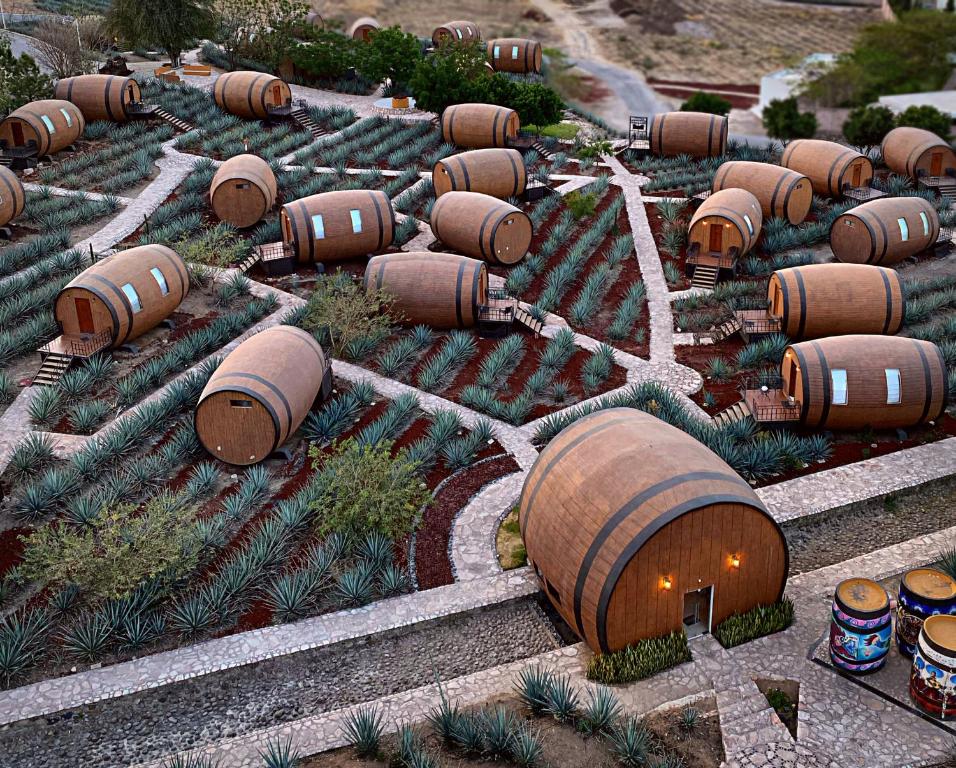
In general, the longer the controlled fermentation period, the higher yield of esters produced. During the fermentation process, ethanol is oxidized and one of the main compounds produced are acetaldehydes, which adds the flavor necessary for the final product of tequila. For example, isovaleraldehyde seems to produce a sweet, cocoa, and chocolate-like flavor. 2 and 3-methylbutanal produce a malty flavor. The agave plant contains many phenolics such as vanillin and syringaldehydes which presents a strong and fruity or herbal aroma. It also contains eugenol which can deliver a hint of spicy flavor to the tequila. Since the production of tequila involves heating, Maillard browning reactions occur, and furans are produced during the thermal degradation of sugar. The most prominent furanic compounds include 2-furaldehyde and 5-methylfuraldehyde, which can contribute to the smoky flavor of tequila. Guaiacol also seems to contribute to Tequila’s smoky flavor. Beta-demascenone contributes to the woody, floral taste of tequila.
Volatile compounds that contribute to the overall taste and aroma of tequila can be quantitatively assessed and evaluated by gas chromatography. Discrimination tests such as duo-trio and triangle tests are also used to evaluate the quality of the tequila.
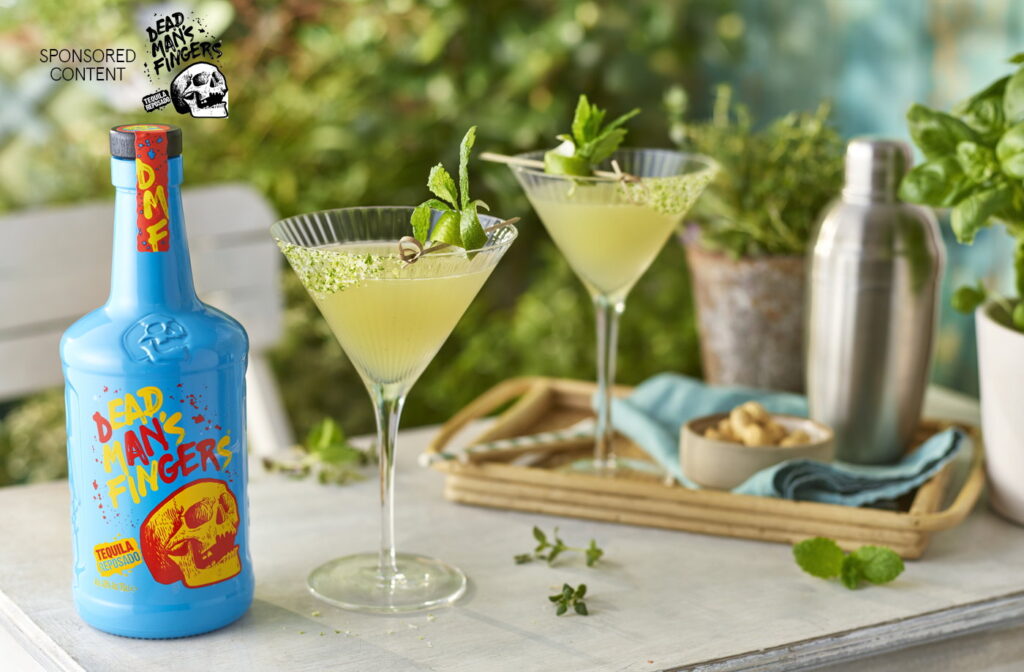
Aging Process Barrel room for aged (añejo) tequila
If silver or white (Blanco) tequila is the desired final product, distillation is the final process it undergoes. Rested (Reposado) or aged (Añejo) tequila must be matured in 200-liter (or larger) white oak barrels for at least two months for the former and 12 months for the latter. There are, however, more than 50 different companies producing tequila in the Mexican province of Jalisco, with different maturation times according to the variety of tequila and desired quality of the final product.
All companies producing tequila have their aging processes regulated and fiscalized by the Mexican government.

Chemistry
The maturation process causes four main chemical transformations to the tequila compounds: decreasing of fusel oils by the char in barrels, which acts as an absorbing agent; extraction of complex wood constituents by tequila, giving specific aroma and flavor to the final product; reactions among the components of tequila, creating new chemical compounds; and oxidation of the original contents of tequila and of those extracted from wood. The final results of these changes are increased concentrations of acids, esters and aldehydes, and a decrease in fusel oil concentration.
Tequila being rested or aged in oak barrels
Reposado may be rested in oak barrels or casks as large as 20,000 liters (5,280 gallons), allowing for richer and more complex flavors. The preferred oak comes from the US, France, or Canada, and is usually white oak. Some companies char the wood to impart a smoky flavor or use barrels previously used with different kinds of alcohol (e.g. whiskey or wine). Some reposados can also be aged in new wood barrels to achieve the same woody flavor and smoothness, but in less time.
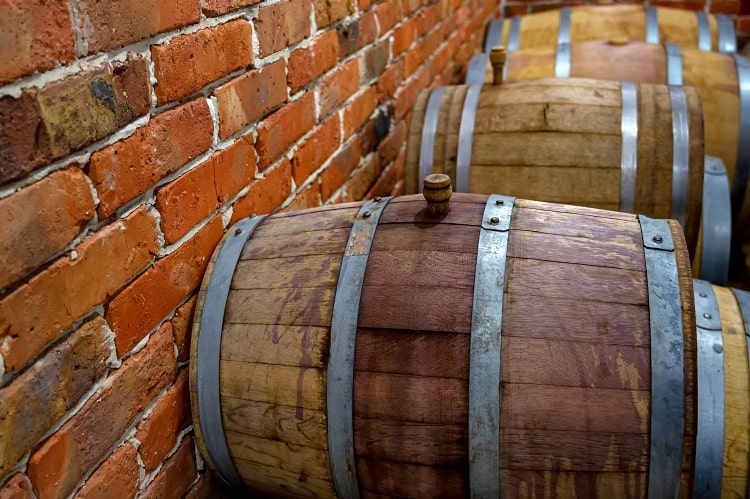
Añejos are often rested in barrels previously used to rest reposados. The barrels cannot be more than 600 liters (158 gallons), and most are in the 200-liter (52-gallon) range. Many of the barrels used are from whiskey distilleries in the US or Canada, and Jack Daniels barrels are especially popular. This treatment creates many of the aspects of the dark color and more complex flavors of the añejo tequila. After aging of at least one year, the añejo can be removed from the wood barrels and placed in stainless steel tanks to reduce the amount of evaporation that can occur in the barrels.

“Tequila worm” misconception
Further information: Mezcal worm
Only certain mezcals, usually from the state of Oaxaca, are ever sold con gusano (with worm). They are added as a marketing gimmick and are not traditional. The tequila regulatory council does not allow gusanos or scorpions (which are sometimes also added to mezcals) to be included in tequila bottles. The worm in some mezcals is actually the larval form of the moth Hypopta agavis, which lives on the agave plant. Finding one in the plant during processing indicates an infestation and, correspondingly, a lower-quality product. However, the misconception that tequilas may contain worms continues, despite effort and marketing to represent tequila as a premium liquor.
Subscribe to our Youtube channel: https://www.youtube.com/@promovision/videos
Norma Oficial Mexicana
A young agave plant
The Norma Oficial Mexicana (NOM) applies to all processes and activities related to the supply of agave, production, bottling, marketing, information, and business practices linked to the distilled alcoholic beverage known as tequila. Tequila must be produced using agave of the species Tequilana Weber Blue variety, grown in the federal states and municipalities indicated in the Declaration.
Furthermore, the NOM establishes the technical specifications and legal requirements for the protection of the Appellation of Origin of “Tequila” in accordance with the current General Declaration of Protection of the Appellation of Origin of “Tequila”, the Law, the Industrial Property Law, the Federal Consumer Protection Law and other related legal provisions.
All authentic, regulated tequilas will have a NOM identifier on the bottle. The important laws since 1990 were NOM-006-SCFI-1993, the later updates NOM-006-SCFI-1994 and NOM-006-SCFI-2005 and the most recent revision published on December 13, 2012, NOM-006-SCFI-2012.
The number after NOM is the distillery number, assigned by the government. NOM does not indicate the location of the distillery, merely the parent company or, in the case where a company leases space in a plant, the physical plant where the tequila was manufactured.
Types
Tequilas of various styles
The two basic categories of tequila are mixtos and 100% agave. Mixtos use no less than 51% agave, with other sugars making up the remainder.[49] Mixtos use both glucose and fructose sugars.
There are also four categories for tequila, depending on the aging period:
Blanco ˈblaŋko or plata ˈplata: white spirit, unaged and bottled or stored immediately after distillation, or aged less than two months in stainless steel or neutral oak barrels
Reposado repoˈsaðo: aged a minimum of two months, but less than a year in oak barrels of any size
Añejo [aˈɲexo] (“aged” or “vintage”): aged a minimum of one year, but less than three years in small oak barrels
Extra Añejo (“extra aged” or “ultra aged”): aged a minimum of three years in oak barrels.
Make sure to stay responsible during your stay in Tequila. These drinks are very tasty and you can easily drink a bit too much if you are not careful. Just mind the amount you can personally handle, obviously do not drink and drive, eat plenty of food and also drink lots of water.
The surprising Magical Town of Tequila, Jalisco, awaits you with the elegant agaves that give life to the most famous drink in Mexico. Find out what to do and how to get there!
Tequila, Jalisco: 7 things to do in this Magic Town
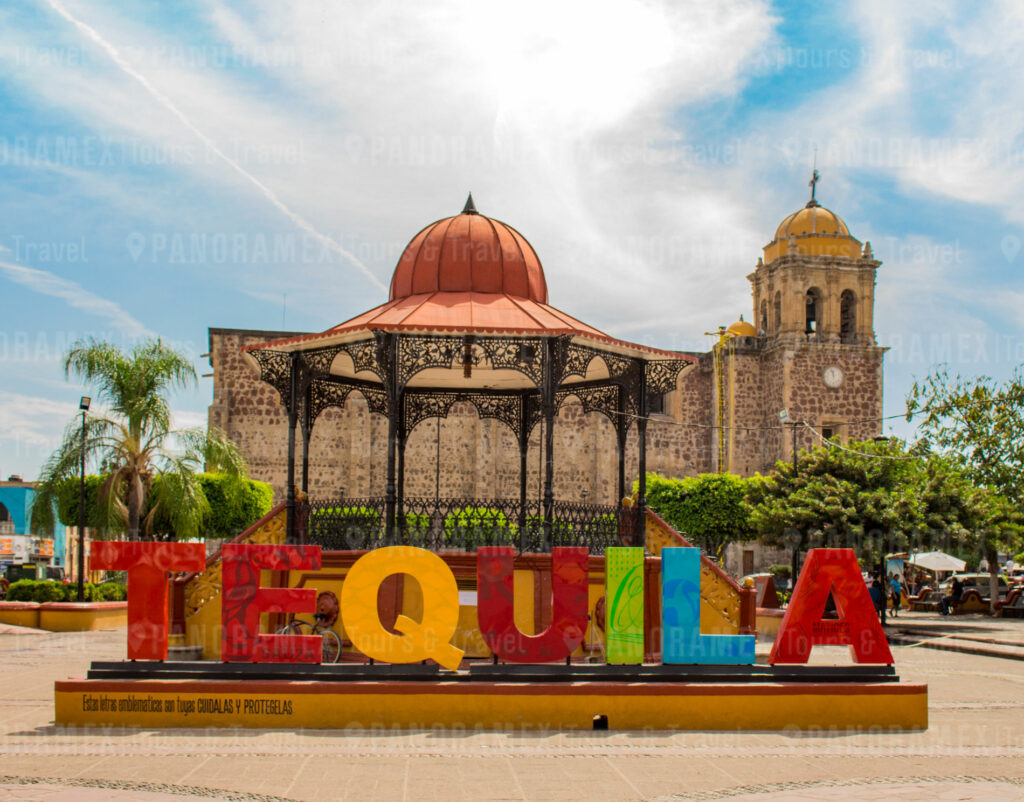
Primitively it was called Tequillan or Tecuila, which has been interpreted as: place where it is cut or place of tributes.
Its primitive settlers were Chichimecas, Otomi, Toltecs and Nahuatlacas. The town was initially settled in a place called Teochichán or Techinchán: place of Almighty God or where snares and traps abound.
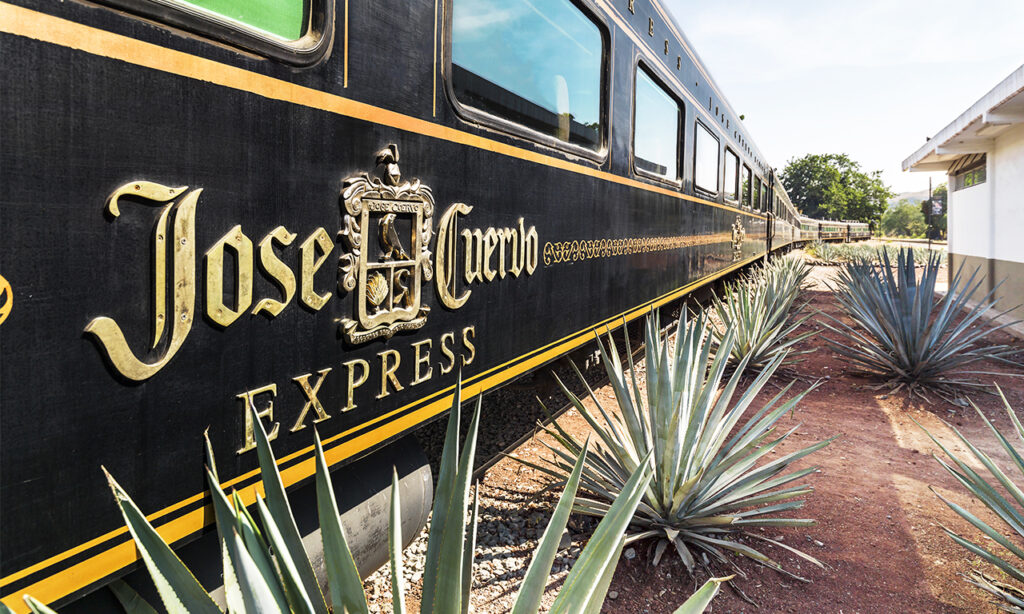
The Plaza Principal of Tequila. Probably the best place to start your tour around the town is the main square. Here, you can enjoy mariachi music and performances on the bandstand. You can also find the giant ‘Tequila’ sign here to take a photo of. In addition, if there’s a festival, it will take place in this square which will be filled with stalls selling a good variety of food and drinks.
Check out the Temple of the Purisima. Just across from the main square is a beautiful temple that was built in the 17th century. It definitely dominates the centre of Tequila so you really can’t miss it.
Learn about the history of tequila at the National Tequila Museum (MUNAT). The museum has different spaces representing the evolution of the famous drink.
Walk along the pedestrianised and umbrella covered cobblestone street of Jose Cuervo. Walking along the streets of any town is a must when in Mexico. They are filled with colourful buildings, shops, restaurants and street vendors.
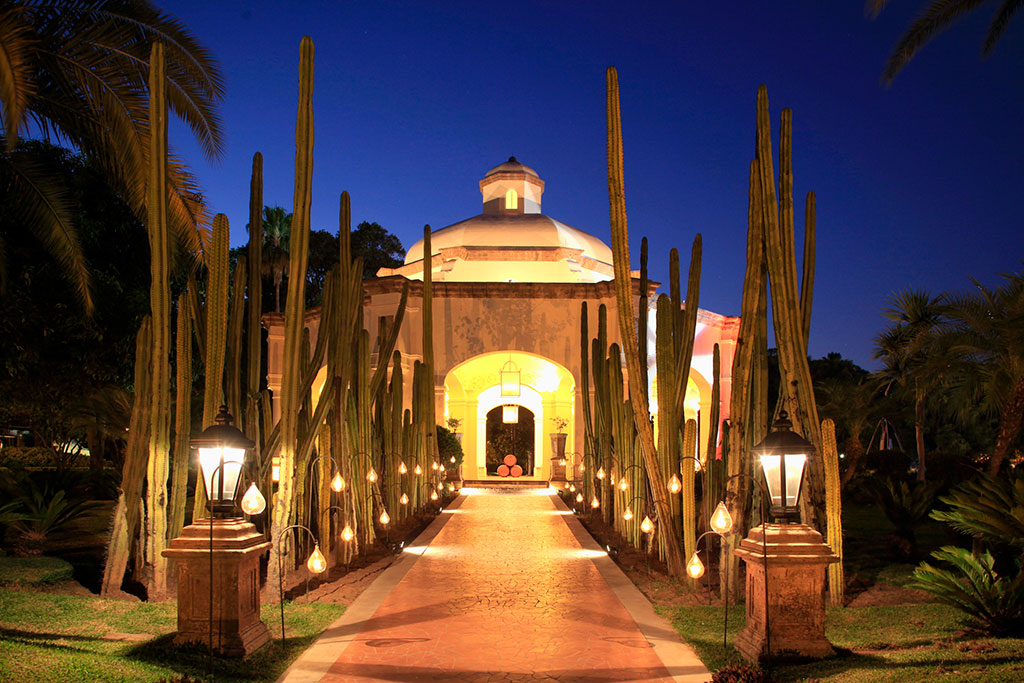
Atractions:
Amatitán
Capilla El Calvario
Cascade Los Azules
El Arenal
Hacienda y destilería José Cuervo La Rojeña
The Destileríes
Los lavaderos
Mundo Cuervo Distillery
Museum Los Abuelos
Museum Nacional del Tequila
Palacio Municipal
Cathedral Parroquia de Santiago Apóstol
Quinta Sauza
Santuary de la Santa Cruz
Temple de la Purísima Concepción
Train Tequila Express o el José Cuervo Express
Tour de Antros, Bars y Taverns
Volcano of Tequila
Festivities:
Cultural week, 1 a 15 abril.
Día de la Santa Cruz, Mai 3. Pelgrimage to Santuario, con dances & firewoks.
“Los cantaritos”, el 24 y 29 junio. Se arrojan en el campo figuras de barro en forma de cántaros.
Nacional Day of Tequila, November & Dicember.
Private Tour Guide Puerto Vallarta Riviera Nayarit Travel Guide see details https://promovisionpv.com/private-tour-guide-puerto-vallarta-riviera-nayarit-travel-guide/

A 3h ride from Puerto Vallarta,
Possible Schedule
Transportation, pick-up at your hotel.
Visite at 1 or more Tequila distilleries & tasting.
An agave growing field.
Mariachi presentaion during lunch time.
Free time walk around streets and boutiques.
Certified guide. Conctact our guide for availability and price options.
We provide information and resources for visitors to Puerto Vallarta, areas of The Riviera Nayarit and other destinations in both states of Jalisco and Nayarit . You will find variety of content, including articles, blog posts, videos, photos, descriptions and interviews, all of which are designed to help visitors plan their trip, including attractions, restaurants, and events. https://promovisionpv.com/

Subscribe to our Youtube channel: https://www.youtube.com/@promovision/videos


